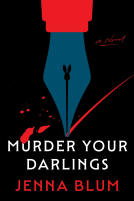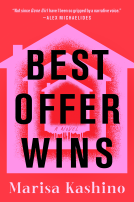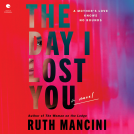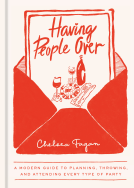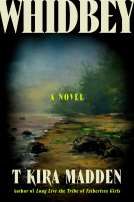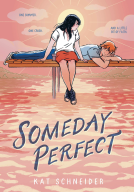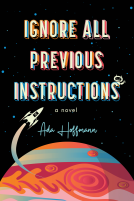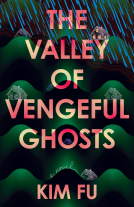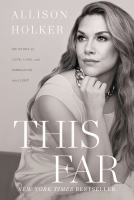
Fuzz
When Nature Breaks the Law
by Mary Roach
This title was previously available on NetGalley and is now archived.
Send NetGalley books directly to your Kindle or Kindle app
1
To read on a Kindle or Kindle app, please add kindle@netgalley.com as an approved email address to receive files in your Amazon account. Click here for step-by-step instructions.
2
Also find your Kindle email address within your Amazon account, and enter it here.
Pub Date Sep 14 2021 | Archive Date Aug 31 2021
Talking about this book? Use #Fuzz #NetGalley. More hashtag tips!
Description
One of Bookpage's Most Anticipated Nonfiction Books of 2021.
Join "America’s funniest science writer" (Peter Carlson, Washington Post), Mary Roach, on an irresistible investigation into the unpredictable world where wildlife and humans meet.
What’s to be done about a jaywalking moose? A bear caught breaking and entering? A murderous tree? Three hundred years ago, animals that broke the law would be assigned legal representation and put on trial. These days, as New York Times best-selling author Mary Roach discovers, the answers are best found not in jurisprudence but in science: the curious science of human-wildlife conflict, a discipline at the crossroads of human behavior and wildlife biology.
Roach tags along with animal-attack forensics investigators, human-elephant conflict specialists, bear managers, and "danger tree" faller blasters. Intrepid as ever, she travels from leopard-terrorized hamlets in the Indian Himalaya to St. Peter’s Square in the early hours before the pope arrives for Easter Mass, when vandal gulls swoop in to destroy the elaborate floral display. She taste-tests rat bait, learns how to install a vulture effigy, and gets mugged by a macaque.
Combining little-known forensic science and conservation genetics with a motley cast of laser scarecrows, langur impersonators, and trespassing squirrels, Roach reveals as much about humanity as about nature’s lawbreakers. When it comes to "problem" wildlife, she finds, humans are more often the problem—and the solution. Fascinating, witty, and humane, Fuzz offers hope for compassionate coexistence in our ever-expanding human habitat.
About the Author: Mary Roach is the author of six best-selling works of nonfiction, including Stiff: The Curious Lives of Human Cadavers, Gulp: Adventures on the Alimentary Canal, and, most recently, Grunt: The Curious Science of Humans at War. Her writing has appeared in Outside, National Geographic, and the New York Times Magazine, among other publications.
Advance Praise
Praise for previous work:
"Nobody does weird science quite like [Roach]"-Wired
"Roach's prose is a triumph, an engaging blend of anecdote, research, and reflection."-Boston Globe
"Our most consistently entertaining science journalist...Roach goes where other writers wouldn't dare."-O Magazine
Available Editions
| EDITION | Other Format |
| ISBN | 9781324001935 |
| PRICE | $26.95 (USD) |
Average rating from 75 members
Featured Reviews
 Elle P, Librarian
Elle P, Librarian
Mary Roach is incapable of writing a bad book! As always, this should be a first purchase for all general nonfiction collections.
Mary Roach's "Fuzz" is as fantastically funny and compulsively readable as her previous books! She is the queen of taking an obscure subject and investigating the science behind it in great detail. Yet her books are lighthearted in nature as well as relaxing to read.
In this book, Mary Roach investigates the science behind many negative interactions between humans and wildlife all over the world. There are discussion of the obvious and much publicized wildlife dangers like bears, elephants, wolves, jaguars, and cougars. Then there are chapters about nuisance animals that you may not have considered: rabbits, starlings, squirrels, monkeys, opossums, raccoons, macaques, and seagulls. At what point are these animals enough of a nuisance to be put to death? What is the most painless way to put them to death? Are cute animals more worthy of life than ugly animals? Will reducing the number of one type of animal in an ecosystem have unforeseen effects on other species in that area? There are a lot of subjects covered in these pages, including not only science, but also politics, ethics, philosophy, and religion. It is an informative book that will have you reading funny passages out loud to your family!
Foxes under boardwalks and beavers chewing through internet cables: more and more, people and animals are getting into each other's space. Roach's entertaining book examines the friction that arises when humans and wildlife cross paths, sometimes with dire consquences, and how both sides are adapting and coping (or not).
Amusing and well presented discussion on wildlife interactions and how they are handled in various cultures: bears in the U.S.; monkeys in India; elephants in Asia and Africa, etc. Roach presents the cultural diffences well and discusses the affect of humans on the environment, and how we react to wildlife in "our" spaces.
Mary Roach never fails to entertain. She takes topics that most know a little something about and plunges deep into the science and reasoning behind some of our most common "why?" questions. In Fuzz, she wages war with the animals and humans that continuously butt heads over territory, food, and resources. How do you punish an animal for breaking the law when the law is made by humans who don't follow the laws of nature? From moose to monkeys, rats and stouts, this book makes you realize your place in the world and just how much we can (and can't) influence the world around us! Highly recommend for a good laugh and a thoughtful read!
 Librarian 525175
Librarian 525175
Mary Roach is one of my favorite authors. Her writing is always phenomenal, and I feel like anyone can read these books, not only those with a science background. How she can create an entire book based on human-wildlife conflict and make it so funny and interesting is beyond me. This was a real fast read for me because I became so enthralled in every adventure she went on that I couldn't put it down.
As always, Roach delivers so much information in palatable and fun chapters. She delves into ideas and approaches that don't occur to the typical reader. I plan to use quotes and chapter titles to entice readers to buy this one!
"The future of turd science is bright."
"Frass is insect excreta and my new favorite word of the day."
"Chapter 8: The Terror Beans" (that title alone is enough to interest me in a whole book!)
 Jeannine C, Reviewer
Jeannine C, Reviewer
Fuzz: When Nature Breaks the Law explores from predators to pests to trees crashing down the world of nature rudely intersecting human "civilization" with both dire and sometimes hilarious consequences. Roach relates stories of intentional predators such as leopards and tigers as well as the not so intentional dangers of hungry bears, poisonous beans, pesky monkeys, the ever popular rat, the hazardous combination of birds and airports, and the Danger Tree, and explores how people seek to "solve" the problem. This is the first time I have read one of Roach's books, so I cannot compare it to one of her other's, but it was as entertaining as her reputation favors her. The book flows like one long narrative. I had to go back to see how it was organized (the disadvantage of the ebook). While filling the book with reams of facts and footnotes, Roach uses all the most interesting and entertaining stories and incidents to make learning as painless as did your favorite teacher. Anyone the least bit interested in animals or nature will enjoy (most of) this immensely. (There were a few icky bits! But you were expecting that, right?) Highly recommended.
 Audrey S, Librarian
Audrey S, Librarian
It does not even really matter what a Mary Roach book is about. Readers aren't going to get an encyclopedic understanding of the topic--here, it's where conservation/wildlife biology meet human civilizations, and how animals and humans coexist. In these chapters, mostly they do so unsuccessfully, due in large part to humanity's foibles and inability to abide by practical common sense advice. Don't leave food out where it will attract bears. Don't go out amongst the elephants at night. Do use lasers to deter gulls from eating large important floral displays. What readers will be looking for is Roach's nonlinear, footnote-adorned take on different situations and her deft balancing of perspectives and personalities. Will readers leave this book with a better understanding of the situations Roach examines? Yes. Will they have been vastly entertained while gaining that understanding? Also, yes. Do not skip the footnotes. Mary Roach is queen of the footnotes.
 Megan M, Librarian
Megan M, Librarian
Roach is known for her irreverent, witty, and accessible approach to science and Fuzz is no exception. Her latest endeavor takes you into the world of flora and fauna behaving badly, starting with bears dumpster diving and housebreaking in Aspen and leading you across the world to pickpocketing monkeys in India and invasive alien species in New Zealand. Roach explores the issues posed by various creatures, how they have been dealt with in the past, present, and possible future solutions. Fuzz is a simultaneously hilarious and sobering look at the difficult choices wildlife organizations must make in order to humanely control out-of-control populations, appease those suffering the nuisance, as well as defenders of animal rights.
 Kimberley M, Librarian
Kimberley M, Librarian
This is another fascinating and funny Mary Roach book that I absolutely loved! In all of the stories about the wildlife workers and the animal perpetrators, it comes back around to humans being the actual problem. I laughed out loud several times and also cried a little worrying about many of the animals that are impacted by lazy or selfish people. I have already recommended this book to anyone who will listen!
Mary Roach’s newest book is about “problem wildlife” and the unpredictable and frequently dangerous interactions between nature and civilization. Her work is as interesting, funny, and delightfully weird as ever, and impeccably researched, with Roach interviewing experts in obscure fields, going along on predawn mountain lion tracking missions, and baiting wild macaques into stealing food just to see what it's like to be robbed by a monkey. Also included: an exploration of deer vs vehicles (including the headlight phenomenon), the next generation of bird deterrents (less scarecrows, more lasers), and death by elephant (more common than you’d think.)
As with everything else by Mary Roach, this book is highly recommended.
 Geoffrey S, Librarian
Geoffrey S, Librarian
Until now, I have kept away from Mary Roach’s books because I somehow got it in my head that as someone who traditionally never been all too interested in most sciences, I would inevitably find them to be mildly interesting, but still slogs overall. But when given the opportunity to read “Fuzz: When Nature Breaks the Law,” I finally decided to give her work a try because the subject matter of this particular book intrigued me so much. However, I still assumed a somewhat dry and jargon-packed narrative.
Well, you know what they say about making assumptions. As it turns out, all of my preconceived notions were so far off that I am now genuinely baffled as to how I arrived at them in the very first place. Roach’s writing is so incredibly approachable (not to mention packed with smart and funny insight) that I now feel like she could write a pamphlet on a random rock and it would end up being one of the most enjoyable things that I have read all week. Fortunately for me, in the case of this specific title, her subject matter is when animals and humanity encounter one another, as seen through the eyes of the women and men who patrol that space. It’s not only a genuinely fascinating topic that was such a blast to explore, but Roach’s writing has provided a fair amount of mental fodder that I am still chewing on, especially on my recent evening walks.
“Fuzz” lies directly at the intersection of educational and enjoyable, and is perfect for both old fans of Mary Roach and newcomers such as myself. And now that I have finally learned what I have been missing out on, it’s definitely time for me to add a few new titles to my to-reads list.
 Sara M, Librarian
Sara M, Librarian
As always, Mary Roach hits it out of the park - this book is thoughtful, informative, and funny. It's also timely - human-wildlife interactions will only increase as we build farther into wildlife habitat, and Roach strikes a good balance and explains well the arguments and emotions on all sides.
It's been awhile since I've read a Mary Roach book, and I definitely missed it! Fuzz lived up to the science and the hype in every way. Covering a wealth of animal-human conflicts, the author offers a broad amount of information in fascinating detail, and one mustn't skip the footnotes, which are just as full of humor as they are history and science.
From bears, coyotes, and mountain lions to tigers and macaques to albatross and mice - even trees! - Fuzz covers quite a lofty amount of animal-human conflicts. Roach discusses what the issues are, what's been tried, what happens now, and what the impact is, which is the question at the crux of the book. Who's really at conflict with who? Who's to say our needs are more important? What is a sentient being? Fuzz is a book about ethics, and their evolution as much as ours.
I learned so much from this book and laughed out loud often too. Ultimately, Roach's book is a modern discussion of overpopulation and conservation, examining research and processes from around the world. The simple fact is as humans require more space to live in, we should expect more animals to enter that space. If we make their lives more difficult, or their territory smaller, they will encroach into our spaces more. Quite often, we are the ones teaching them bad habits.
Thank you to the publisher and NetGalley for a review copy.
 Librarian 224291
Librarian 224291
I received an ARC via NetGalley in exchange for an unbiased review.
However, I am totally biased in favor of Mary Roach's books, but it's the old fashioned kind of bias of really consistently getting a kick out of her work. Her sense of humor works for me and she brings a delightful amount of perverse enthusiasm to the subjects she writes about! It's been longer than usual between publications for her, and this one surprised me since I do periodically check in on her Twitter to see if she's talking about any upcoming releases. I was a little nervous for this topic, though -- how many ways can you write about "humans meets wildlife, humans (eventually)(mortally) win"? Thankfully, it was not so bleak, and I don't mean because she balanced out anecdotes of animal-kills-human with human-kills-animal! We get to dive into the people-management aspects of wildlife management, the pursuit of more targeted and human "mouse traps" and other efforts to draw a line between theirs and ours... and yes, a little human/animal mutual attacks (accidental or otherwise).
In order, she looks at (spoilers?): wolves, bears, elephants, leopards, monkeys, cougars, trees, poisonous plants , birds, deer, birds again, and rats. The conflicts/human-nature interactions can be loosely sorted into food (animals getting at trash, picnics, crops); wrong place, wrong time crossover (like trees falling on you); car vs future roadkill; invasive species and pest control.
As always, Roach speckles in tiny detours and trivia, like window-shopping along your commute. Surprisingly, her somewhat unfortunate namesake, the roach, didn't really steal the spotlight anywhere, nor did the loathsome mosquito, but one can infer the state of their human interactions based on the various sections on pest control and so forth.
Interestingly, I've managed to more than once find opportunities to expound on my learnings from this book to other people on three separate occasions in as many weeks! The fight-or-flight timings of deer (and other animals) in the headlights -- and the research in preventing their paralysis -- accounting for two of those occasions. It made an impression and found its way into my conversations... jolly good for any book!
Like any prognosticating charlatan, it is easier to work backwards from a known future to find the seeds all along. Some of this book (albatrosses, chicken guns) definitely had its start in Grunt: The Curious Science of Humans at War (which in turn had at least one lead from her research for Bonk: The Curious Coupling of Science and Sex). So of course, as always, I wonder what the next topic may be. Plants got short shrift here, so maybe a book on poisons? And/or one to do with fermentation and alcohol (which counts as toxin, to go with the poison theme)? Orrrr insects, which also were notably even more sparse. I eagerly await.
 kate j, Librarian
kate j, Librarian
I love Mary Roach's books. She dives into topics most of us have given only a passing thought to, whether it's death, sex, food, (maybe more than a passing thought to those last two) and now, wildlife/human conflict. She investigates and then presents to the reader an informative and often light-hearted (even funny at times) book that makes you think.
In Fuzz, Ms. Roach tackles the never-ending human/wildlife conflicts. She travels around the world meeting with experts and seeing first-hand the steps that are being taken to alleviate unnecessary damage or death. From bears to moose to elephants to mice, the reader goes on the journey with the author.
Some of the information is difficult. Reading details about killing methods (whether the death is of a person or a wild animal) is not always easy to take. Much of the conflict was economic - crops destroyed, property damaged, etc., and all of us can relate to some conflict when wildlife and people have come too close.
I appreciate that Ms. Roach ended the book on a positive note. The chapter with the cattle rancher and his mouse and bird problem was ultimately hopeful and there is a page or two of resources at the end of the book that help the reader learn how to coexist with wildlife. It is encouraging that there are so many people looking for less painful ways to control animal populations today than there were in the past.
My thanks to W.W. Norton and Co. and NetGalley for the ARC in exchange for an honest review.
Readers who liked this book also liked:
Allison Holker
Biographies & Memoirs, Health, Mind & Body, Parenting, Families, Relationships
